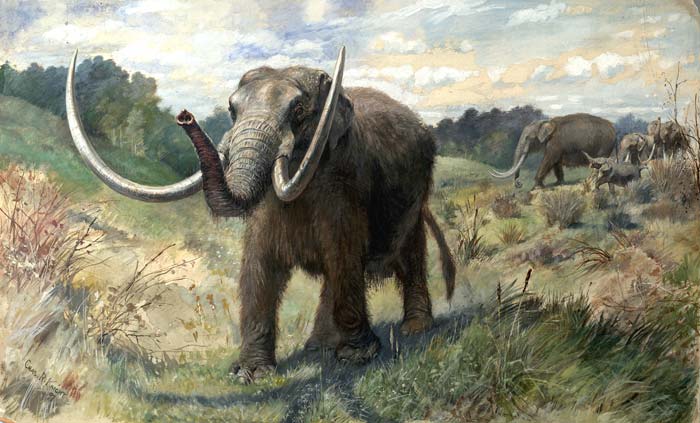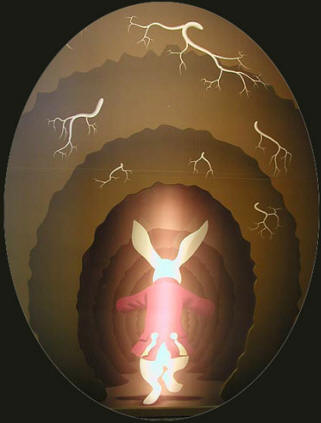Evolution
David Tyler on rewriting the textbooks on Archaeopteryx – that dinobird, no longer First Bird, downgraded to dinosaur
Dinobird flap: Why do they care so much how creationists take it?
Remember the Icon of the First Bird, Archaeopteryx? Word is, it’s not a bird

After analysing the traits present in Xiaotingia and its relations, Xu and his colleagues are suggesting that the creatures bear more resemblance to the dinosaurs Velociraptor and Microraptor than to early birds, and so belong in the dinosaur group Deinonychosauria rather than in the bird group, Avialae. Many features led the team to this decision, but the most immediately noticeable are that Xiaotingia, Archaeopteryx and Anchiornis have shallow snouts and expanded regions behind their eye sockets. Microraptor has similar traits, but the early birds in Avialae have very different skulls.
But what if they find a fossil that looks like those ones, but has a bird-like skull? Can they say why they are sure they won’t? Is that a prediction? Read More ›
ID author Don Johnson on US West Coast speaking tour
Don Johnson, author of Probability’s Nature and the Nature of Probability, will be on a speaking tour: A West-Coast fall tour starting in the Northwest on Oct 22, ending in Southern California on Dec 6 (with an Arizona excursion Nov 14-17). More details will be available when the “Programming of Life” DVD is released around Aug 1. More. Don Johnson has earned Ph.D.s in both Computer & Information Sciences from the University of Minnesota and in Chemistry from Michigan State University, was a senior research scientist for 10 years in pharmaceutical and medical/scientific instrument fields, was an independent computer consultant for many years, taught 20 years in universities in the US and Europe, and since “retiring,” has done consulting, speaking Read More ›
David Tyler asks, “How SHOULD the NSF measure scientific literacy?”
At Access Research Network (7/22/11). And offers an answer: For 20 years, the National Science Foundation (NSF) has undertaken surveys of science literacy that incorporate these two true-false statements: “Human beings, as we know them today, developed from earlier species of animals”, and “The universe began with a huge explosion”. Happily, changes have been recommended, but not all have welcomed their suggested replacement wording. The critics say that the revised statements are “surrendering ground to religion”. I will suggest below that both the engineers of change and their critics have something to learn about science surveys. More. See also: The Darwinist prediction that comes true time and time again Follow UD News at Twitter! —
Last Eukaryotic Common Ancestor facilitates multi-cell complexity?
Over at Design Matrix, in “First questions about LECA” (July 22, 2011), Mike Gene offers,
We have seen that science has discovered the last eukaryotic common ancestor was essentially as complex as a modern day eukaryotic cell (see here and here and here).
Okay, so in that respect, evolution did not happen. Can we get past that fact, or are we still stuck with funding propaganda from the Darwin lobby?
Furthermore, I have argued that this complex cell plan that has defined eukarya since the time of LECA has worked to facilitate the eventual emergence of metaozoan-type complexity. Read More ›
What might the recent treasure trove from the Ice Age in North America tell us?

Troy Hooper reports on the discovery of “the finest mastodon site in the world” in Colorado in 2010 in “Curtains close on scientifically significant Snowmass bone dig …’” (Real Aspen, July 10, 2011):
The fossil excavation at Ziegler Reservoir came to a close a couple of days ago, yielding an Ice Age ecosystem of 4,826 bones and evidence detailing 26 different vertebrae creatures that also include giant bison, Columbian mammoths, super-sized ground sloths, deer, a horse, camel, otter, muskrat, vole, mink or weasel, chipmunk, bat, rabbit, beaver, mouse, salamander, frogs, lizards, snake, fish and birds.
They are between 43 and 150,000 years old. Read More ›
Latest origin of life theory – “RNA reactor” preceded life – prompts question
Unlike the furtive ants, stick insects really have, allegedly, gone a million years without sex
In “Stick insects survive one million years without sex” (BBC Nature, 19 July 2011), Ella Davies reports. Timema genevievae is a female-only species of stick insect “All the evidence points to Timema tahoe and Timema genevievae having persisted for over one million years without sex,” Dr Schwander told BBC Nature. “Our research adds to the growing amount of evidence that asexuality does not always result in the rapid extinction of a lineage,” she said. After the shocking ant revelations, we’re all skeptics here.
Antz, what do you mean, she told you she was asexual … and you BELIEVED her?
Parents strongly cautioned: ant sex discussed
At The Scientist (July 18, 2011), Tia Ghose explains, “Asexual Ants Have Sex”, which will take some explaining, but here goes:
Some populations of ants long thought to be asexual get a dose of genetic diversity by having sex.
On paper, asexuality seems like a winning strategy. Sexless creatures pass on all their genes—as opposed to just half—and “you don’t have to spend huge amounts of energy going around and finding a mate and going through courtship and exposing yourself to disease,” Tsutsui said.
[ … ]
But the fungus-farming ant is one of the few species that appeared to adopt a purely asexual lifestyle: researchers had never seen a male in the wild, and ants in the lab produced clonal offspring.
But hang on, Read More ›
Bacteria smarter than us?
In “Bacteria Flash Like Christmas Lights,” Sara Reardon (Science NOW, 14 July 2011) tells us:
Like little batteries, bacteria have two charges: positive on the outside of their cell membranes, negative on the inside. And as with batteries, this division of charge is their power source. By pumping protons across their membrane, bacteria can make energy, spin their flagella so they can swim, and drive the pumps that bring in food. Researchers have now found that Escherichia coli drop this voltage difference for a brief moment and depolarize, much as neurons do when they fire. The phenomenon could help explain how some bacteria resist antibiotics. Read More ›
NCSE stands firm: There is no evidence against (Darwinian) evolution
The source who reported on U.S. Darwin lobbyist Eugenie Scott’s recent talk in Scottsdale, Arizona, on why you can’t teach evidence against evolution, asked her for clarification.
Now, when she says “evolution,” we are pretty sure she means Darwinism. Why? Let investigative journalist Suzan Mazur explain. Her story is consistent with another episode in the life of the Darwin lobby. His note to her:
Genie,
You stated in your April 17 talk in Scottsdale, AZ:
There is no evidence against evolution. There is no evidence against the idea that livings things shared common ancestry. All of the evidence that we have from biogeography, from comparative anatomy, from genetics, from the fossil record, from any number of different sources, that all is very compatible and pointing very clearly to the inference that living things had common ancestors. Nothing out there is running a big neon light saying, ‘Whoa! Evolution fails here! We have to toss it out!’
If “there is no evidence against evolution”, or indeed could exist, how then can evolution be testable?
The answer he got back was Read More ›
Extrapolation studies discover single gene that creates human brain

In “Mutations in Single Gene May Have Shaped Human Cerebral Cortex” (ScienceDaily, Apr. 28, 2011), we encounter a surprising claim:
The size and shape of the human cerebral cortex, an evolutionary marvel responsible for everything from Shakespeare’s poetry to the atomic bomb, are largely influenced by mutations in a single gene, according to a team of researchers led by the Yale School of Medicine and three other universities. Read More ›
They said it: Origin of new traits – “pertinent,” “fundamental,” and “unanswered”
Here: This work is difficult and time consuming, but the question at its core—the genetic origin of new and complex traits—is probably still one of the most pertinent and fundamental unanswered questions in evolution today. At stake is the possibility of testing whether novel complex traits arise from a gradual building of novel developmental networks, gene by gene, or whether pre-existent modules of interacting genes are recruited together to play novel roles in novel parts of the organism. – Monteiro A, Podlaha O (2009) Wings, Horns, and Butterfly Eyespots: How Do Complex Traits Evolve? PLoS Biol 7(2): e1000037. doi:10.1371/journal.pbio.1000037 February 24, 2009 But surely the answer c has come in by now, right? Alternatively: Those guys must be creationists if Read More ›
